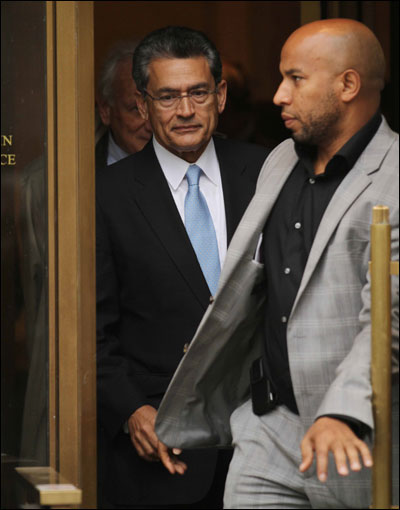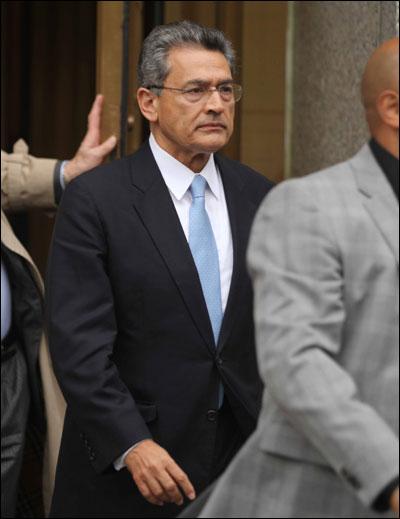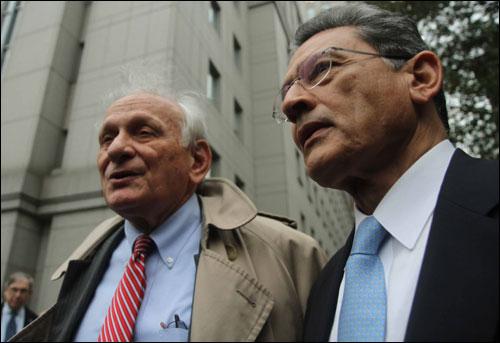
When important people are involved in insider trading, only quick and firm action against them sends a powerful message, Pratip Kar.
When the District Court for the Southern District of New York convicted Rajat Gupta on June 15, 2012, on one count of conspiracy and three counts of substantive securities fraud, insider trading had claimed perhaps its most honourable victim.
Since the conviction, the argumentation had centred on what would be the appropriate punishment for him.
Should he serve a prison sentence "to reflect the seriousness of Gupta's crimes" and to deter "other corporate insiders in similar positions of trust from stealing corporate secrets"?
Or, should the good works prior to his wrongdoing and the weighing of the good with the bad of the defendant be the important sentencing factors?
On October 24, when the District Court Judge Jed Rakoff sentenced Gupta with a two-year prison term and a fine of $5 million, he sought to strike a balance between the polar extremes. Gupta's trial holds several lessons for us that are far too significant to ignore.
Click on NEXT for more...

First, there needs to be a serious appreciation, not only among the regulators but also all the market participants, intermediaries and the corporate world, that insider trading is a major offence.
It is a seemingly simple truth, surprisingly not always obvious.
Second, successful detection of insider trading needs overwhelming circumstantial evidence and voluminous data analysis for any reasonable person to reach an irrefutable conclusion.
This is a painstaking exercise. But insider trading is easy to commit and difficult to catch; its rewards are great enough to lure people again and again to take the risk of getting caught.
That is why the track record of detection and prosecution of insider trading in most countries, except the United States, is poor.
Click on NEXT for more...

No doubt technology as well as free access to private data are required. But more than that, perhaps a strong and reliable information network, ability to call for and ferret out information, supplemented by forensic accounting, a deep understanding of the stock market, corporate world and securities laws, and a knowledge of the behaviour of the market participants and various cohorts.
These must be predicated on an uncanny expertise to connect the dots.
Technology certainly makes detection easy and wiretapping facilitates it further. Indeed, without the wire taps, the Galleon hedge fund manager Raj Rajaratnam's indictment would have taken much longer and Gupta's crime may have been difficult to detect.
But Rajaratnam's case was the first wiretap for an insider trading investigation in the 75-year history of US securities laws. Wiretaps were not used in any of the 67 cases that pleaded guilty of insider trading between 2008 and now.
Dennis Levine, Martin Siegel and Ivan Boesky - speculators and symbole de jour of Wall Street greed in the 1980s - were indicted of insider trading and pleaded guilty between 1986 and 1989, without wiretapping evidence, with low levels of technology and despite the Securities and Exchange Commission being equipped with fewer powers than it has now.
Click on NEXT for more...

Third, if insider trading is viewed as a serious white-collar crime, then only a determined, concerted effort on the part of the government, the regulatory agencies and the legal system can successfully fight it. In the five-year, focussed crackdown in the US, all of these entities joined hands.
It began in 2007 with the conviction of a hedge fund manager David Slaine. The investigations against him led to the sequential unravelling of a wide web of insider trading woven by Rajaratnam.
As a part of the crackdown, the US Attorney Preet Bharara charged 72 people with insider trading since late 2009, 69 of whom pleaded guilty or have been convicted.
Twenty-one of them were part of Rajaratnam's insider trading web. The last one in the web was Gupta.
Click on NEXT for more...

Fourth, formidable reputation and powerful global connections did not come in the way of a just sentencing. In his sentencing order, Judge Rakoff observed, "He [Rajat Gupta] is a good man,... But the history of this country and the history of the world are full of examples of good men who did bad things." His lenient sentence was determined as a "just punishment", "sufficient, but not greater than necessary" to comply with the provisions of Crimes and Criminal Procedure in the US Code.
Fifth, a determined and focussed pursuit of a case to its denouement in a fair and transparent manner is necessary.
But unlike Javert in Les Miserables, this pursuit was without any vindictiveness and to serve a larger economic goals - to preserve the sanctity of a financial system and to rescue the market system which is so central to a large, free market economy.
Click on NEXT for more...

Sixth, what is the appropriate deterring punishment for white-collar crimes? Since 1986, the US has successfully been able to impose large fines and prison terms ranging from a couple of years to 11, on illegal insider traders.
The US Congress has also tightened the laws. But the number of illegal insider traders has only grown. Should this engender a debate on what is the appropriate deterring punishment for white-collar crimes?
Many economists and legal scholars, Henry Manne, Thomas Sowell and Milton Friedman among them, have relentlessly argued in favour of revoking the laws which make insider trading illegal.
Their protestations are not shared by securities market regulators and the legal systems in most countries. Maybe a bold action against a globally respected person like Gupta will send the right message to the market.
At least for sometime, till even this shall pass.
Click on NEXT for more...

In the end, one question and one unresolved dilemma remain. The question is why did Gupta challenge the administrative proceedings and opt for a court trial when administrative proceedings would have involved only civil liabilities and monetary penalty.
The dilemma is what made Gupta share confidential information with someone he knew was a Wall Street trader? It is difficult to imagine that a brilliant man like Gupta was naive not to know that his actions were wrong and unethical. Only Gupta would be able to answer the question and resolve the dilemma.
Gupta now has legal recourse to appeal in the Second Circuit, as Rajaratnam has done, to challenge the wiretap. Maybe he will choose to wait for that verdict. Has Gupta met his denouement? Clearly not. We must not forget that even a ferocious dacoit, Ratnakar, through penance and realisation became Rishi Valmiki and gave India the Ramayana.